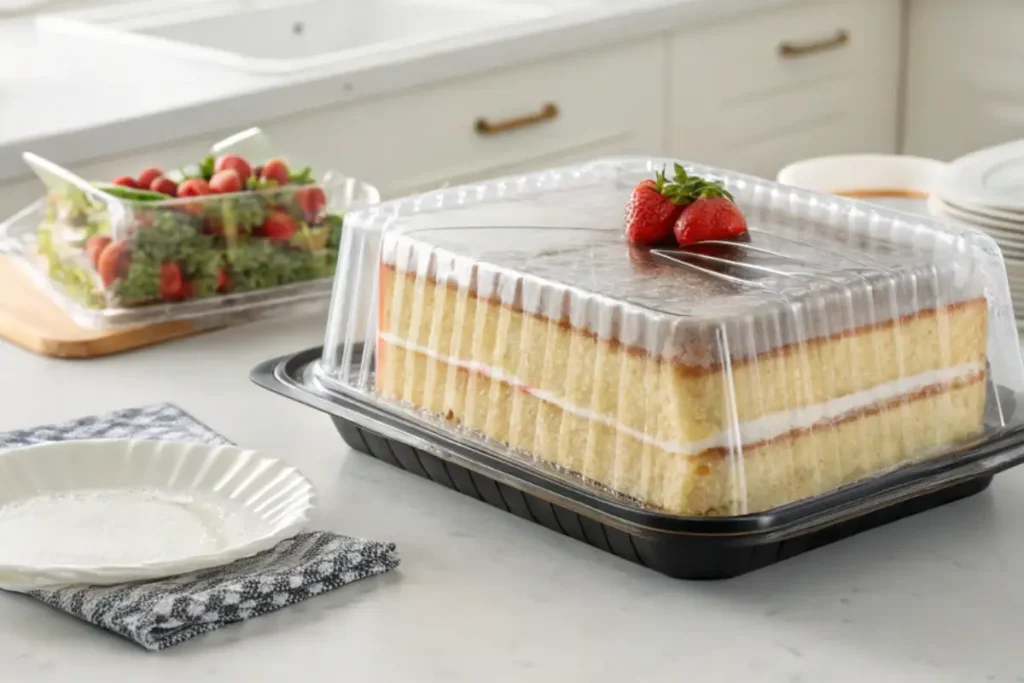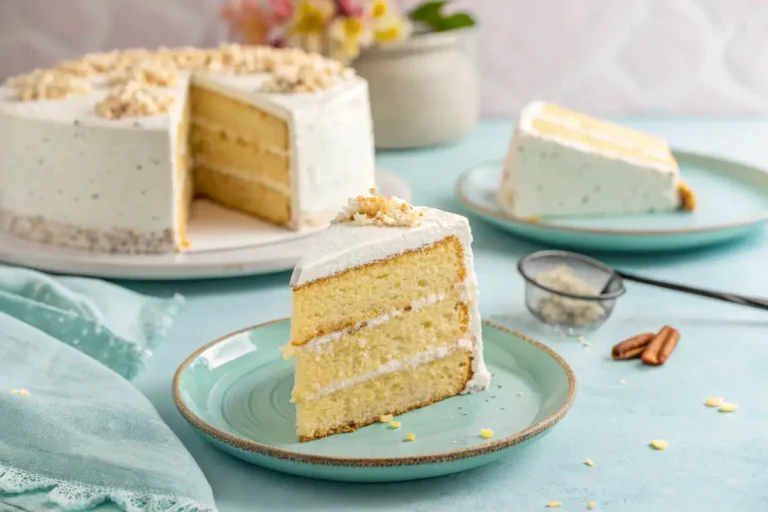Introduction
Have you ever found yourself eyeing that leftover dessert on the counter and wondering, can we eat a 10 day old cake?You’re not alone. Many of us have a soft spot for sweet treats, and deciding whether to enjoy a slice of leftover cake can be a tricky dilemma. In fact, can we eat a 10 day old cake when it’s been stored properly, or is it simply too risky?
If you’re unsure, you’re not alone in your curiosity. Many cake enthusiasts find themselves pondering, can we eat a 10 day old cake without compromising freshness? In this guide, we’ll delve deeper into whether we can eat a 10 day old cake safely. Bakers everywhere want to know: can we eat a 10 day old cake that has been left unrefrigerated or sealed improperly?
Whether you’re dealing with a homemade sponge or a professional bakery masterpiece, proper handling is crucial. But can we eat a 10 day old cake that still looks visually appealing? With so many variables, the recurring question is, can we eat a 10 day old cake that has been partially frosted or fully decorated? We’ll explore proven storage methods, identify warning signs of spoilage, and highlight ways to extend cake life—helping you decide if a 10 day old cakeremains edible.
In the sections ahead, you’ll learn about vital tips for preserving moisture, preventing mold growth, and making the most of leftovers. So, can we eat a 10 day old cake if it has no strange smell or visible flaws? We know the question can we eat a 10 day old cake often hinges on how it was stored. Join us as we unlock the secrets of cake shelf life and answer once and for all: can we eat a 10 day old cake with confidence?
1. Understanding Cake Shelf Life
Cake is a classic dessert, beloved for its sweet flavors and indulgent textures. But just how long does cake stay fresh, and can we eat a 10 day old cake without risk? Many factors come into play, including the type of cake, ingredients, and storage conditions. Generally, a freshly baked cake can remain at its best for about three to four days at room temperature. However, certain cakes can last longer, especially when properly stored—leading many to ask: Can we eat a 10 day old cake if it still looks okay?
When we talk about homemade cakes, the lack of preservatives typically means a shorter lifespan. Store-bought cakes often include additional stabilizers and preservatives that help them remain fresh for extended periods. Still, these cakes are not immune to spoilage and eventually lose their texture and flavor. Understanding the difference in ingredients and preservative use is key to determining whether you can safely enjoy a 10 day old cake.
For instance, a light sponge cake made with basic ingredients might begin to dry out after two or three days. On the other hand, denser varieties like pound cakes or fruitcakes, which are typically richer in fats and sugars, may retain moisture and flavor for a bit longer. Whether homemade or store-bought, the clock starts ticking as soon as you slice into that beautiful creation, so it’s important to ask yourself: Can we eat a 10 day old cake once it starts to show signs of staleness or dryness?
Keeping track of the date you first cut into the cake is crucial. If you’re nearing day 10, you’ll want to pay close attention to the cake’s appearance, smell, and texture. This vigilance ensures that you and your loved ones enjoy fresh cake without risking potential foodborne issues. Remember, there’s more to cake shelf life than a simple “best by” date—storage habits and environmental factors can make all the difference when deciding, “Can we eat a 10 day old cake safely?”
2. Factors Affecting Cake Freshness

While most cakes have a general lifespan of a few days to a week, specific factors influence how quickly a cake will spoil. These factors range from the cake’s design and ingredients to the way it’s stored before and after slicing.
- Frosting and Fillings: The type of frosting or filling used plays a major role in cake longevity. Buttercream frostings tend to seal in moisture well, helping the cake stay fresher, longer. Whipped cream or cream cheese frostings are more delicate, requiring refrigeration to prevent spoilage. If your cake has fruit fillings, the moisture from the fruit can accelerate spoilage if left out at room temperature.
- Climate and Humidity: Cakes stored in hot or humid environments are prone to faster spoilage. High moisture levels in the air can cause mold growth and can even make certain frostings melt or separate. Meanwhile, extreme heat can cause creams and custards to curdle or turn sour.
- Packaging and Handling: Whether you store your cake under a dome, wrap it in plastic, or place it in an airtight container matters. Proper packaging keeps air and contaminants away from the cake’s surface. Each time you open the container or remove the covering, you risk exposing the cake to bacteria or airborne particles.
- Exposure to Light: Prolonged exposure to direct sunlight or strong artificial light can cause frosting discoloration or degrade delicate flavors. Storing your cake in a dark, cool place slows down oxidation and extends its shelf life.
- Size and Shape: A single-layer sheet cake might remain fresh longer than a multi-layer cake with various fillings. Each layer and filling adds complexity, creating more surfaces that can harbor bacteria.
By understanding these factors, you can better predict how long your cake might last and how best to store it. From the frosting you choose to the container you use, every little detail can help keep that slice as fresh as possible. If you’re aiming for a piece of cake on day 10, it’s essential to pay attention to the early warning signs of spoilage.
3. Signs Your Cake May Have Gone Bad
Examining a leftover cake before taking a bite is always a wise decision. When you’re asking yourself, Can we eat a 10 day old cake? it’s crucial to inspect it for any red flags. Here are some telltale signs that your dessert is past its prime:
- Mold Growth: The most obvious indicator of a spoiled cake is the presence of mold. Any green, white, or black spots on the cake’s surface or within its layers signal that harmful fungi have set up shop.
- Off Smell: A fresh cake should smell sweet and tempting. If you catch a sour or rancid odor, it likely means the cake’s ingredients have started to break down.
- Dry or Hard Texture: While dryness doesn’t necessarily mean a cake has become unsafe, it certainly reduces the cake’s quality. If combined with other spoilage signs like discoloration, it’s better to err on the side of caution.
- Strange Taste: Even if your cake passes the visual and sniff tests, a bitter or “off” flavor upon the first bite is a strong signal that it’s no longer good.
- Discoloration: Frostings or fillings sometimes develop dark or grayish patches when they’ve been exposed to air or have begun to spoil.
If you detect any of these red flags, it’s best to discard the cake immediately. Remember, consuming moldy or otherwise spoiled cake can lead to an upset stomach or foodborne illness. When in doubt, toss it out. That said, a 10 day old cake could still be safe under the right conditions, provided you see no alarming signs and it has been stored properly.
4. Proper Storage Techniques
Preserving a cake’s freshness is part science, part art. If you’re hoping to make that birthday treat or anniversary cake last well over a week, you’ll need to store it like a pro. Here are some straightforward techniques to help you do just that:
- Room Temperature vs. Refrigeration: Most simple cakes—like those frosted with buttercream—can safely stay at room temperature for two to three days. However, if you live in a warm climate or have used perishable fillings such as whipped cream or custard, refrigeration becomes crucial.
- Wrap It Up: Air is the enemy of a moist cake. To lock in freshness, wrap the cake or individual slices tightly in plastic wrap. Alternatively, store the cake in a sealed container. The less contact your cake has with open air, the longer it will remain at its best.
- Separate Frosted Layers: If you anticipate a long storage period, consider storing layers and frosting separately. This approach works well if you haven’t assembled the cake yet or if you’re removing leftover slices.
- Use Quality Containers: A sturdy, airtight container helps maintain the cake’s original flavor and aroma. Label the container with the storage date to keep track of freshness.
- Freezer-Friendly Storage: For extended cake preservation, the freezer is your best friend. Wrap each layer in plastic wrap, then in aluminum foil to protect it from freezer burn. Thaw it gradually in the refrigerator before serving.
These storage fundamentals apply whether you want your cake to last three days or three weeks. If you follow these guidelines diligently, you’ll stand a better chance of enjoying a slice on day 10 without worrying about harmful bacteria or compromised flavors.
5. How to Make Your Cake Last Longer
Keeping a cake fresh isn’t just about where you store it—it’s also about how you prepare it. By applying a few strategic techniques, you can significantly prolong the life of your favorite dessert.
- Moisture-Locking Methods: Applying a thin layer of simple syrup or glaze to the cake layers before frosting can lock in freshness. This is especially helpful with sponge cakes prone to drying.
- Choose the Right Frosting: Buttercream, ganache, and fondant tend to protect cake layers better than whipped cream or meringue-based frostings.
- Slice Only What You Need: Constantly slicing into the cake can introduce new bacteria. Instead, cut slices only when it’s time to serve to reduce exposure to air.
- Avoid Temperature Fluctuations: If you expect to consume the cake over several days, store it consistently in one location. Frequent temperature changes cause condensation and encourage bacterial growth.
- Pay Attention to Ingredients: Cakes made with perishable fillings like dairy or fresh fruit won’t last as long as those with more shelf-stable components.
These methods, when combined with smart storage practices, provide a strong defense against dryness, mold, and other forms of spoilage. If you’re committed to enjoying that cake a week or more after it’s baked, every detail—from the icing choice to the slicing technique—will play a significant role.
6. Best Practices for Leftover Cake
Once your celebration is over, you might be left with more cake than you can handle in a single sitting. Knowing how to treat those leftovers can be the difference between a tasty slice days later and a disappointing, stale snack.
- Daily Inspection: Check your leftover cake each day for any visible signs of spoilage. Early detection is key to preventing health risks.
- Reseal, Rewrap, Reuse: After cutting a slice, quickly reseal the cake with plastic wrap or place it back in its airtight container.
- Properly Portion Slices: If you suspect you won’t finish the cake soon, slice it into individual portions and wrap each piece separately.
- Keep It Cool: If your leftovers have dairy-based components, refrigerate them. Room temperature could encourage bacterial growth, especially in warm, humid environments.
- Handle with Clean Utensils: Always use clean knives and serving tools to avoid contaminating the cake with bacteria.
Following these tips can extend the life of your cake and reduce food waste. Each additional day of safe, delicious cake is a small victory, especially if you’re aiming to enjoy a slice well beyond the one-week mark.
7. Repurposing a 10 Day Old Cake

Sometimes you’ll find yourself in a situation where you’re not entirely comfortable eating a 10 day old cake in its original form, even if it still appears safe. That doesn’t mean you should toss it right away. Repurposing offers a fun, creative way to breathe new life into leftover slices.
- Cake Pops and Truffles: Crumble leftover cake and mix it with frosting or cream cheese to form balls. Dip them in melted chocolate for a sweet, bite-sized dessert.
- Trifles and Parfaits: Layer cake cubes with pudding, whipped cream, or fruit preserves. The added moisture helps soften stale sections, creating a fresh dessert experience.
- Cake Crumbs for Toppings: Toast crumbled cake in the oven and use it as a crunchy topping for ice cream or yogurt.
- French Toast or Bread Pudding: Dense cakes can be sliced and used in place of bread for a comforting breakfast or dessert dish.
Before repurposing, do a quick inspection to ensure the cake is still free from mold and off-odors. Repurposing won’t fix a cake that has already spoiled, but it can transform a slightly stale cake into a delightful new treat.
8. Frequently Asked Questions
Can I eat cake after 10 days?
When you find leftover dessert lingering on the counter, it’s natural to ask, can we eat a 10 day old cake? The answer depends on factors like how the cake was stored, its frosting type, and the presence of any visible spoilage signs such as mold, off smells, or discoloration. If it has been kept refrigerated or frozen correctly and looks perfectly fine, you might still enjoy a safe slice. However, dryness often sets in by day 10, impacting taste and texture. Ultimately, can we eat a 10 day old cake without risk? It’s possible if everything checks out, but always trust your senses. The moment you suspect something’s off, err on the side of caution and throw it out.
Is it safe to eat a 2 week old cake?
A 2 week old cake is stretching the limits of most cakes’ shelf lives. While some dense fruitcakes or cakes with ample preservatives might last this long under ideal storage conditions, it’s generally not recommended. If you decide to check, look for any red flags like mold, unusual odors, or odd textures. Unless you’re dealing with a special type of long-lasting cake (like heavily preserved fruitcake), it’s safer to avoid eating cake that’s been around for 14 days.
Is cake edible after 2 weeks?
Similar to the previous question, cake is usually no longer edible after two weeks unless it’s a special variety specifically designed to last longer, such as fruitcake made with alcohol or certain preserved commercial cakes. Even then, you must store it properly—typically in the fridge or freezer. When you suspect your cake might be too old, it’s best to discard it and protect yourself from potential foodborne illness.
How long is birthday cake safe to eat?
Most birthday cakes last about three to four days at room temperature, especially if frosted with buttercream. If the cake contains perishable fillings, it should be refrigerated to last up to a week. Leftover birthday cake stored properly in the freezer can last up to two or three months without significant quality loss. Regardless of timing, if you notice any signs of spoilage, err on the side of caution and throw it out.
Conclusion
So, can we eat a 10 day old cake? The answer hinges on smart storage, the type of cake, and your willingness to inspect it thoroughly before taking a bite. By understanding cake shelf life, using the right frosting, and following best practices for storing leftovers, you can safely extend your cake’s lifespan. Even if the cake is no longer at its peak by day 10, there are plenty of creative ways to repurpose it into a new dessert.
If you’re still wondering, can we eat a 10 day old cake without compromising flavor or safety, keep an eye on visible signs of spoilage. Look out for dryness, off smells, or mold—each can signal that the cake has reached the end of its journey. However, if everything appears fine, there’s no reason to discard a slice that could still be perfectly tasty.
Whether you store your cake in the fridge, freezer, or on the counter, consistency and cleanliness are your allies. By paying attention to temperature fluctuations and sealing your leftovers properly, you can significantly extend a cake’s freshness. When managed correctly, can we eat a 10 day old cake with confidence? Absolutely—just make sure to rely on sight, smell, and taste as your guiding factors.
Now that you have all the essential tools and tips, can we eat a 10 day old cake and truly enjoy it? In many cases, yes, as long as it’s stored well and shows no signs of spoilage. Don’t forget to share these insights with fellow cake lovers who might be tempted to toss out a perfectly salvageable treat!
Looking for more ways to make the most of your sweet treats? The next time you’re deciding, “Can we eat a 10 day old cake?” consider transforming it into cake pops, trifles, or crumb toppings if you find yourself with extra slices. Remember, safety comes first—but with proper storage and a little creativity, you can savor every crumb of that delicious cake.

